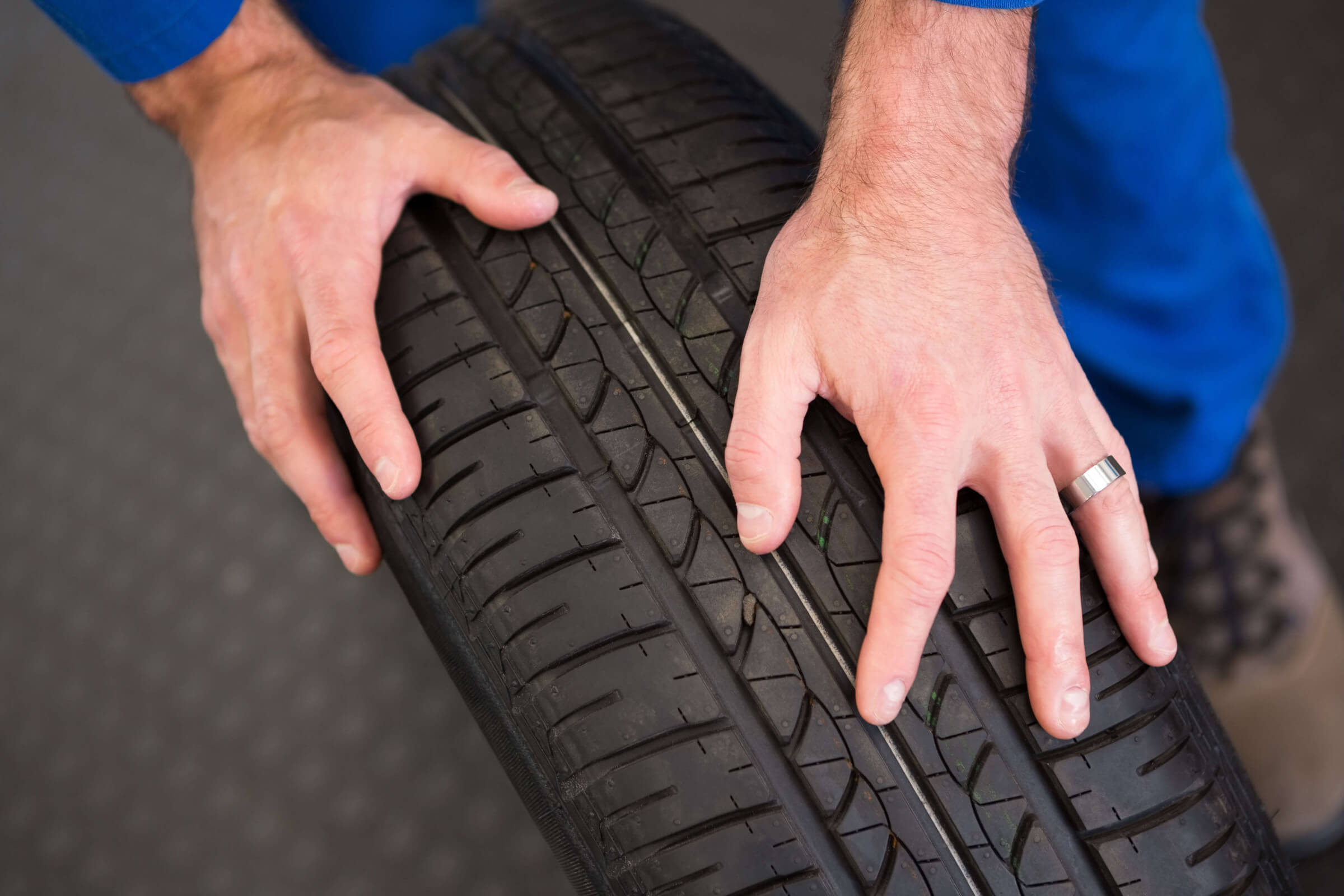Like any product sold to the public, tires are subject to very strict standards to ensure the safety of a vehicle’s occupants, but also, by extension, that of other road users. These standards fall into two categories: load index and speed rating. These behave like the certifications that all tires must have in Canada. They guarantee that the tires behave optimally with respect to the car they are mounted on when used within the limits indicated by the aforementioned ratings. Blackcircles Canada tells you everything you need to know about load and speed ratings, so you can make the right tire choice when it’s time to get new tires!
Load and Speed Ratings: Definition
Before we get into the ins and outs of load and speed ratings, we first need to explain what each one represents, starting with the most basic of the two, the load index.
The load index is very simple to define, it is a code corresponding to the maximum load that a tire can support. By multiplying the corresponding load value by two, the value obtained must be greater than or equal to the total load of the axle of the car on which it is mounted, for an appropriate inflation pressure. For most passenger vehicles (cars, SUVs and pickup trucks), the load index is between 75 and 100, which is a load limit that the tire can support between 387 and 800 kg. However, load ratings range from 0 to 279, and cover all tire types from the smallest motorized two-wheelers to the largest construction site giants.

The speed rating is more complex. According to the Tire and Rubber Association of Canada, the speed symbol is a letter that represents the maximum speed at which a tire can be driven safely for a predefined load index. Thus, the value of the speed rating depends on the load index. These letters are all listed in the speed index correspondence table below, and represent a range from 5 km/h to 300 km/h.
What do these ratings imply in reality and what does the law say?
The definitions detailed above for load and speed ratings have important implications for the occupants of a vehicle, first and foremost for the driver.
For the load index, it is simple: both running gears must have tires that are capable of supporting the load on each of them. If tires with a lower load index are fitted, these will not be able to support the axles properly. They will undergo structural deformation that may affect their integrity. In addition to shortening their service life, this structural deformation can be dangerous in driving situations, since it affects the vehicle’s behaviour during acceleration, braking and cornering. For this reason, it is strictly forbidden to fit tires with a load index lower than that of the original equipment or that prescribed by the manufacturer.
As far as the speed rating is concerned, things are a little more complex. To find out how a tire scores on the speed rating index, tests are carried out in the laboratory as follows:
- The tire is pressed against a large diameter drum to reproduce the target load index for the test.
- The tire is run at ever increasing speeds, about 10 km/h steps in ten minute increments.
- This increase in speed applied to the tire continues until the tire is running at the maximum speed intended for the tire.

These ratings are valid only for original equipment tires with integral structure, inflated to the correct pressure and mounted on a vehicle with a load that complies with the tire load index. They also represent a standard of longevity, represented here by the tire’s ability to resist heat or temperature rise. Tires rated with higher speed ratings usually dissipate heat better, grip and perform better when turning or braking. They therefore give a more rigorous road handling to the vehicle equipped with them.
Unlike the load index, the speed rating offers more manoeuvring freedom. Thus, during the summer months, while it is forbidden to fit a tire with a lower speed rating, it is perfectly possible to fit one with a higher index than the original recommended level. In winter, on the other hand, it is possible to opt for tires with a speed rating just below the minimum speed rating recommended by the manufacturer for summer tires. The reason: lower driving speeds and colder weather during the winter season. However, as soon as the temperature regularly stays above 7 °C, you will have to return to your summer tire fitting. One last thing: prolonged driving at high speeds can damage tires and cause an accident, even if they are inflated to the correct pressure and mounted on a vehicle with the appropriate load. So be careful!
Where can I find the load and speed ratings on a tire?
Now that you know exactly what the load and speed ratings are for a vehicle and why they are important, you need to identify them on your vehicle’s tires.
It’s very easy to find them; simply look on the sidewall of your tires for a code made up of numbers and letters based on the following model: 111/1A11 11A. Let’s look at a concrete example, with the 195/65R15 91H code.
In this specific case:
- 195: The width of the tire section, measured in mm.
- 65: The aspect ratio of section height to section width when the tire is fully inflated, mounted on a wheel approved for the tire, and is not loaded. The lower the value, the stiffer the ride, the more responsive the steering and the better the cornering grip.
- A: The type of tire construction. In this case, it is a radial construction tire.
- 15: The diameter of the rim, measured in inches.
- 91: The load index of the tire.
- H: The speed rating of the tire.

In the example above, you will need to look at the last two numbers to determine the load index, and the last letter to determine the speed rating. You will then have to refer for each of them to the corresponding value respectively in the load value table and the speed value table below to find out the maximum load and speed for which your tire is approved. Here, the load index corresponds to a maximum weight of 615 kg, and the speed rating to a speed limit of 210 km/h.
Therefore, you need tires with the correct load and speed ratings for your car!
Now you know what the load and speed ratings of a vehicle mean and what they mean for your safety. Once you have identified the load index and speed rating for your car, the next time you change your tires, make sure they meet the minimum recommended values for your vehicle. However, if it’s already time to change your tires, visit blackcircles Canada’s website to find the right ones for your vehicle and place an order!
Correspondence table for tire load index
| Load Index | Weight | Load Index | Weight | Load Index | Weight | Load Index | Weight |
| 20 | 80 kg | 55 | 218 kg | 79 | 437 kg | 101 | 825 kg |
| 22 | 85 kg | 58 | 236 kg | 80 | 450 kg | 102 | 850 kg |
| 24 | 85 kg | 59 | 243 kg | 81 | 462 kg | 103 | 875 kg |
| 26 | 90 kg | 60 | 250 kg | 82 | 475 kg | 104 | 900 kg |
| 28 | 100 kg | 61 | 257 kg | 83 | 487 kg | 105 | 925 kg |
| 30 | 106 kg | 62 | 265 kg | 84 | 500 kg | 106 | 950 kg |
| 31 | 109 kg | 63 | 272 kg | 85 | 515 kg | 107 | 975 kg |
| 33 | 115 kg | 64 | 280 kg | 86 | 530 kg | 108 | 1000 kg |
| 35 | 121 kg | 65 | 290 kg | 87 | 545 kg | 109 | 1030 kg |
| 37 | 128 kg | 66 | 300 kg | 88 | 560 kg | 110 | 1060 kg |
| 40 | 136 kg | 67 | 307 kg | 89 | 580 kg | 111 | 1090 kg |
| 41 | 145 kg | 68 | 315 kg | 90 | 600 kg | 112 | 1120 kg |
| 42 | 150 kg | 69 | 325 kg | 91 | 615 kg | 113 | 1150 kg |
| 44 | 160 kg | 70 | 335 kg | 92 | 630 kg | 114 | 1180 kg |
| 46 | 170 kg | 71 | 345 kg | 93 | 650 kg | 115 | 1215 kg |
| 47 | 175 kg | 72 | 355 kg | 94 | 670 kg | 116 | 1250 kg |
| 48 | 180 kg | 73 | 365 kg | 95 | 690 kg | 117 | 1285 kg |
| 50 | 190 kg | 74 | 375 kg | 96 | 710 kg | 118 | 1320 kg |
| 51 | 195 kg | 75 | 387 kg | 97 | 730 kg | 119 | 1360 kg |
| 52 | 200 kg | 76 | 400 kg | 98 | 750 kg | 120 | 1400 kg |
| 53 | 206 kg | 77 | 412 kg | 99 | 775 kg | ||
| 54 | 212 kg | 78 | 425 kg | 100 | 800 kg | ||
Correspondence table for tire speed ratings
| Speed Rating | Speed | Speed Rating | Speed | Speed Rating | Speed |
| A1 | 5 km/h | D | 65 km/h | Q | 160 km/h |
| A2 | 10 km/h | E | 70 km/h | R | 170 km/h |
| A3 | 15 km/h | F | 80 km/h | S | 180 km/h |
| A4 | 20 km/h | G | 90 km/h | T | 190 km/h |
| A5 | 25 km/h | J | 100 km/h | U | 200 km/h |
| A6 | 30 km/h | K | 110 km/h | H | 210 km/h |
| A7 | 35 km/h | L | 120 km/h | V | 240 km/h |
| A8 | 40 km/h | M | 130 km/h | ZR | > 240 km/h |
| B | 50 km/h | N | 140 km/h | W | 270 km/h |
| C | 60 km/h | P | 150 km/h | Y | 300 km/h |






